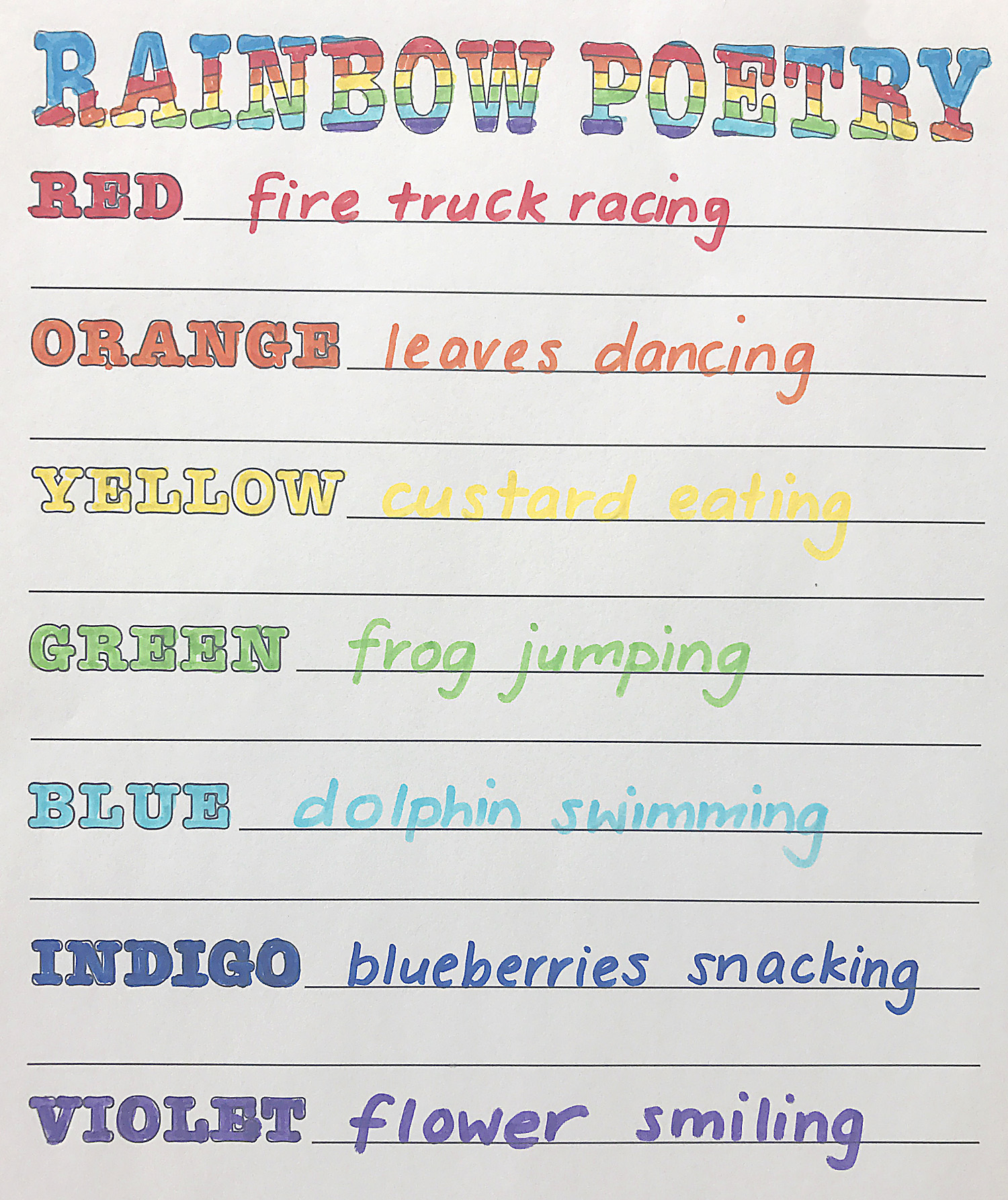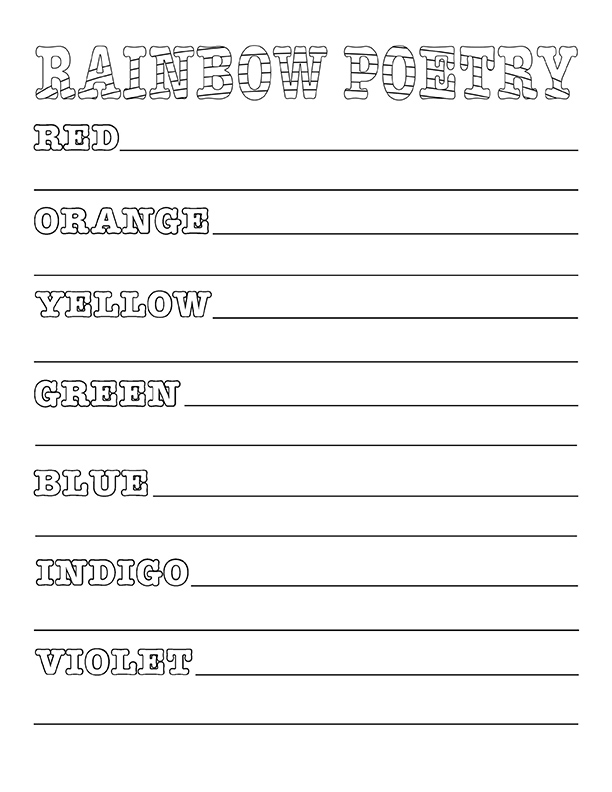April is National Poetry Month, which makes it the perfect time to introduce a simple poetry writing activity inspired by something kids love: rainbows!
Yellow is a daisy
Yellow is a pear
Yellow is the color
Of my sister’s hair
A good many children are captivated by the rhythm and rhyme of poetry, often heard first through nursery rhymes and storybooks. Nurturing this interest and curiosity — through reading poems and trying simple poetry writing exercises — can help your child develop a real love of language. Not only does it put their imaginations to work, but poetry provides a terrific creative outlet for ideas, thoughts, and feelings.
This activity will easily get you started. And it doesn’t have to be just for children — the rainbow poetry exercise below offers a great opportunity for your entire family to talk, create, and write together. Here are some simple steps to begin:
Step #1: Read Poetry
You may find it helpful to read some poems together before attempting to write poetry. Try sharing poems by your favorite poet, or find inspiration for your budding young poet in The 20th Century Children's Poetry Treasury or one of Shel Silverstein’s wonderful children's poetry books.
Step #2: Get Started With Examples
Begin by explaining to your child that poems rely on a small number of carefully selected words that create a picture in the mind of the reader. Poems can rhyme, but they certainly don’t have to, and often don't. They also can be so simple, but still expressive and fun. Here's an example:
Brown
Furry bear
Squelchy mud
Barking dog
Brown
Step #3: Create a Rainbow Colored List
Because color is all around us and experienced through all of our five senses and emotions, it's a great topic for your child’s (or indeed, even your) first attempts at writing poetry.
To create a Rainbow Poem, use the seven rainbow colors featured on the left side of our Rainbow Poetry printable, or simply have each person write a list of his or her favorite colors. Your child might like to use a different colored pen or pencil to write each word in the matching color.
Step #4 (for Younger Children or Reluctant Writers): Add Nouns, Verbs, and More
Next, have your child choose one color to begin with, and together brainstorm a collection of objects (toys, foods, animals, etc.) that relate to that color. Repeat for each of the colors on the list. Write each object representing the color beside each color word on the list, for example:
Red fire truck
Orange leaves
Yellow custard

She can then extend each line of the poem by adding a word to describe each object or its actions. Try to include words to describe how the color feels, looks, sounds, smells, and even tastes! You can share these ideas verbally or have your child write each of the words alongside the color name. For example:
Red fire truck races
Orange leaves dance
Yellow custard yum!
Step #4 (for Older Children): Brainstorm Expressions for Each Color
Older children and adults can brainstorm words and write lines for each color that shares how the color looks, smells, sounds, tastes, or feels all at once. For example:
Red smells like sweet strawberry pie
Orange looks like campfire flames
Yellow feels like warm sunshine
Green tastes like crunchy apples
Blue sounds like water dripping
Once your child is happy with her poem, invite her to decorate it with pictures and patterns inspired by her words. You might even enjoy hosting a poetry reading where each family member is invited to share their rainbow poetry writing efforts. And if she is really keen, invite your child to have a go at writing a short poem about each of her favorite colors, like the yellow and brown poem samples included above.
Making time to enjoy poetry with your child is a wonderful way to inspire her creativity and that all-important love of language – both now and in the future.




